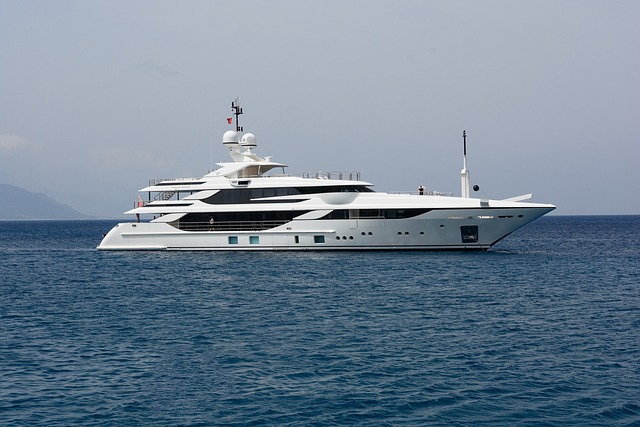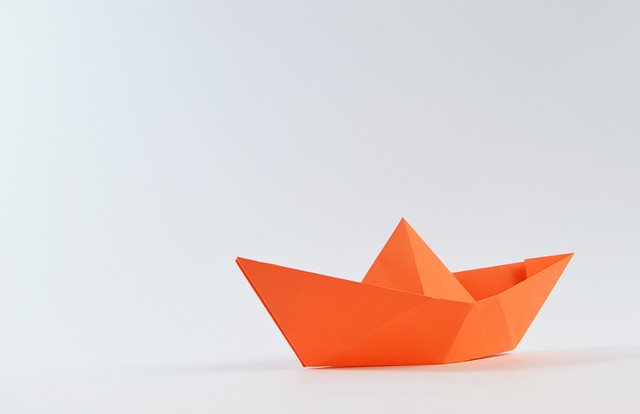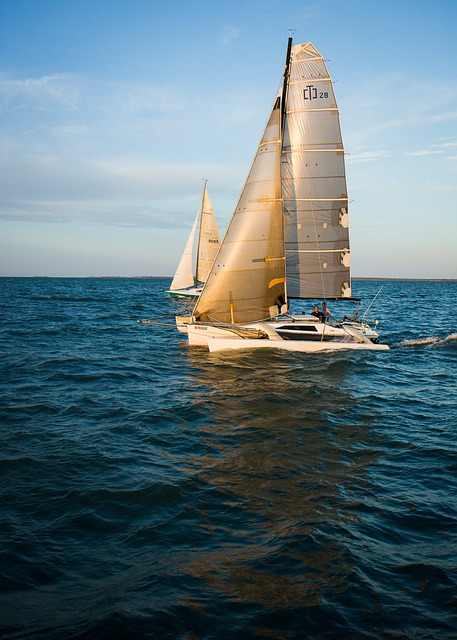To maintain a marine battery's performance during the winter season, it's essential to take several proactive steps. Firstly, choose an appropriate storage location that is dry, well-ventilated, and shielded from extreme temperatures. Regularly inspect and clean the battery terminals to prevent corrosion, which can impair connections and energy transfer. For lead-acid batteries, ensure the electrolyte solution is at the correct level to prevent freezing. AGM batteries are more resistant to cold but still require insulation. Use a marine battery charger with temperature compensation to maintain optimal charge levels without the risk of overcharging. Employ insulating covers or battery boxes designed for maritime use to protect against frost damage. Monitor the battery's voltage, keeping it at an appropriate floating level, and consider a slow charge rate to avoid overheating. Utilize smart charging systems that can adjust the charging process based on temperature sensitivity. Conduct regular checks for signs of terminal corrosion or electrolyte leaks. By following these guidelines, your marine battery will be prepared to handle the return to warmer weather with maximum performance and longevity.
As winter’s chill sets in, safeguarding your marine battery becomes paramount. This article outlines seven pivotal tips tailored for winter care of your marine battery, ensuring its longevity and performance when the warmer months return. From grasping the intricacies of your battery’s composition to adhering to charging protocols, each step is crucial for maintaining optimal voltage amidst cold weather. Insulation, regular monitoring, cleaning, and safe handling are all integral aspects of winter marine battery care. Follow these guidelines to protect your investment and ready your marine battery for the next season’s adventures.
- Understanding Your Marine Battery's Composition and Requirements
- Preparing Your Marine Battery for Winter Storage
- Insulating for Performance: Protecting Your Marine Battery from Frost and Cold Weather
- Charging Protocols: Maintaining Optimal Voltage in Winter Conditions
- Regular Monitoring: Keeping an Eye on Battery Health Throughout the Season
- Cleaning and Maintenance: Ensuring a Corrosion-Free Connection
- Safe Handling and Emergency Preparedness for Your Marine Battery in Winter
Understanding Your Marine Battery's Composition and Requirements

When winter’s chill sets in, understanding your marine battery’s composition and requirements becomes paramount for ensuring its longevity and performance. Marine batteries, typically lead-acid or AGM (Absorbed Glass Mat) types, are designed to handle the rigors of a marine environment but require specific care during the colder months. Lead-acid batteries, for instance, can struggle with low temperatures as the chemical reactions that allow them to hold a charge slow down. It’s crucial to monitor the battery’s state of charge and keep it at an optimal level throughout the winter. A full charge helps prevent freezing, as the electrolyte solution remains liquid and active. Conversely, AGM batteries offer superior performance in colder conditions due to their valve-regulated design that minimizes the risk of overcharging and spillage. To maintain your marine battery’s health during winter, consider insulating it with a non-conductive material to prevent self-discharge and ensure it’s stored in a dry, ventilated area. Regularly check the water levels if you have a traditional lead-acid battery, as the water can freeze and cause irreparable damage to the internal structure of the cell. By understanding the nuances of your marine battery’s composition and addressing its specific needs during the winter season, you can safeguard against the cold’s effects and ensure your vessel’s electrical systems are ready for action when warmer weather returns.
Preparing Your Marine Battery for Winter Storage

During the winter months, preparing your marine battery for storage is crucial to ensure its longevity and optimal performance when the warmer season returns. The cold can drain a marine battery’s charge much faster than in temperate conditions. To mitigate this, begin by cleaning the battery terminals and ensuring a secure connection. This will prevent any loss of energy due to poor connections. Additionally, check the water levels in each cell if the battery is of the flooded lead-acid type; the electrolyte should be at the appropriate level to prevent freezing and damage.
For optimal charge maintenance during the off-season, consider investing in a marine battery charger capable of delivering a trickle charge. This will keep the battery charged without overcharging it. Store the battery indoors in a dry place, away from extreme temperatures and direct sunlight, which can further drain the charge or cause irreversible damage to the battery’s components. If possible, choose a location where the temperature is consistently above freezing. Regularly inspect the battery throughout the winter to catch any issues early, such as corrosion on terminals or signs of leaking electrolyte, which could necessitate replacement or repair before the next boating season.
Insulating for Performance: Protecting Your Marine Battery from Frost and Cold Weather

During the winter months, ensuring your marine battery performs optimally is crucial for both safety and usability. As temperatures drop below freezing, the chemical reactions within a lead-acid or AGM (Absorbed Glass Mat) battery sluggishly, which can impair its ability to hold a charge. To mitigate this, it’s essential to insulate your marine battery adequately. High-quality insulation not only preserves the battery’s charge but also maintains its efficiency by preventing the formation of a frozen electrolyte solution, which can permanently damage the battery. Consider using insulating materials with an R-value suitable for marine environments, such as neoprene covers or specially designed battery boxes that can withstand harsh conditions. These insulation solutions help maintain the battery’s optimal operating temperature range and ensure it remains operational when you need it most. Additionally, placing the battery in a sheltered area away from drafts and direct exposure to cold air can further enhance its performance during the winter season. Regular maintenance checks should also be performed to monitor the battery’s state, ensuring it is charged correctly and ready to endure the cold without risking damage or reduced lifespan. By taking these proactive measures, you can safeguard your marine battery from the detrimental effects of frost and cold weather, guaranteeing its longevity and reliability throughout the winter season.
Charging Protocols: Maintaining Optimal Voltage in Winter Conditions

During winter months, adhering to proper charging protocols is crucial for maintaining optimal voltage in your marine battery. The cold can significantly reduce a lead-acid battery’s ability to hold a charge; therefore, it’s imperative to ensure that the battery is charged to its full capacity more often during this season. A marine battery should be kept at a charge level between 80% and 100%; this not only helps in combating the effects of low temperatures but also minimizes the formation of sulfate on the plates, which can impair battery performance over time. Employing a smart or automatic charging system that is designed for marine applications can be highly beneficial. These systems are equipped with sensors to detect the temperature and state of charge, providing the appropriate charge level without overcharging, which can damage the battery. Regular monitoring of the battery’s voltage is also essential. A multimeter can be used to check the voltage after each journey or at regular intervals when the vessel is laid up for the winter. The ideal floating voltage for a lead-acid marine battery in cold weather is typically around 12.68 volts; this helps to maintain the battery’s health and readiness for use when conditions improve.
When charging your marine battery in winter, it’s important to consider the charge rate as well. A slower charge rate is less taxing on the battery and can help to prevent overheating, which can be a concern even in cold weather. Chargers with temperature compensation features can adjust the charging process based on ambient temperature, ensuring that the battery receives the correct amount of current without being subjected to extreme temperatures that could lead to damage or reduced lifespan. Additionally, using a battery insulator or blanket designed for marine use can help retain heat and improve performance. By following these charging protocols, you can ensure that your marine battery remains in optimal condition throughout the winter, ready to power your vessel’s electronics when warmer weather returns.
Regular Monitoring: Keeping an Eye on Battery Health Throughout the Season

Cleaning and Maintenance: Ensuring a Corrosion-Free Connection

When the cold winds of winter blow, taking care of your marine battery becomes even more critical. To maintain optimal performance throughout the season, regular cleaning and maintenance are essential. Begin by inspecting the battery terminals and connections for signs of corrosion. This often manifests as a white or greenish powdery substance on the metal, which can impede conductivity and lead to a weakened electrical connection. Use a wire brush to gently remove this corrosion, taking care not to damage the terminal or the casing of the battery. After cleaning, apply a protective coating such as dielectric grease or an anti-corrosion spray to the terminals and connections to shield them from future environmental contaminants. This not only ensures a reliable connection but also helps prevent the formation of corrosion, which can be more problematic in the harsh conditions that winter brings.
Another crucial aspect of marine battery care during the winter is ensuring that the battery remains clean and dry. Regularly wash the battery case and terminals with a mixture of baking soda and water to remove any salt or acid residues that can form from battery acid leaks, which are more common in cold weather. Once cleaned, thoroughly dry the area with a soft cloth or an air blower to prevent the accumulation of moisture, which can also lead to corrosion and reduce the battery’s lifespan. Keeping your marine battery clean and free of corrosion is a key component of its longevity and reliability, especially during the winter months when conditions are harsher and the demand for power may still be present. Regular maintenance and checks will help ensure that your marine battery performs admirably when you’re ready to set sail again.
Safe Handling and Emergency Preparedness for Your Marine Battery in Winter

When winter’s chill sets in, taking proper care of your marine battery becomes paramount to ensure its longevity and reliability. Safe handling during this season is critical as cold temperatures can significantly affect a battery’s performance. To mitigate the risks associated with low temperatures, it’s essential to keep your battery in a warm, dry place when not in use. If storage isn’t possible inside, consider an insulated battery box to retain heat and protect against extreme cold. Regularly check the battery’s state of charge; keeping it fully charged can prevent freezing, as a fully charged battery operates at a higher voltage and thus retains more heat.
Moreover, emergency preparedness for your marine battery in winter involves having a well-thought-out plan should issues arise. Ensure you have the necessary tools on board, such as jumper cables, a voltmeter, and a charger compatible with your specific marine battery type. Familiarize yourself with the battery’s maintenance procedures, including how to clean terminals and check electrolyte levels. It’s also wise to keep an eye on the weather forecast and plan accordingly to avoid being caught off guard by unexpected cold snaps that could compromise your vessel’s electrical systems. By adopting these precautionary measures, you can safeguard your marine battery against winter’s challenges and ensure it remains a reliable power source when you set sail again.
When winter’s chill sets in, safeguarding your marine battery becomes paramount. Following the seven key tips outlined in this article—from comprehending your battery’s specific needs to meticulously monitoring its health—will ensure your maritime equipment remains ready for action when warmer waters beckon. Proper insulation, charging protocols, and maintenance prevent performance decline, even in the most frigid temperatures. By adhering to these guidelines, you can protect your marine battery’s longevity and reliability throughout the winter season, guaranteeing a smooth transition back to the waves come spring. Remember to always handle your battery with care, prioritizing safety and preparedness year-round.
